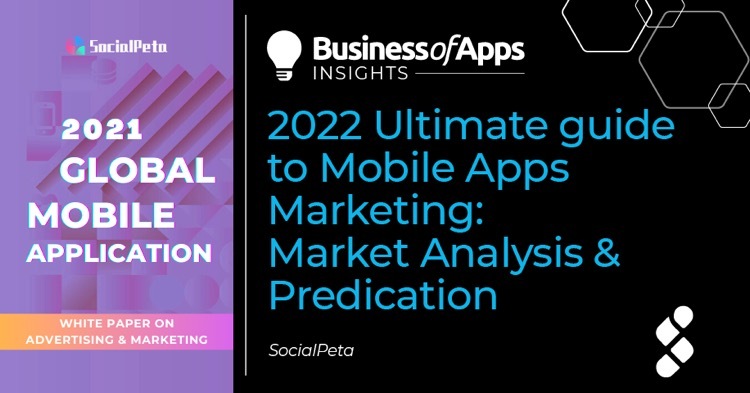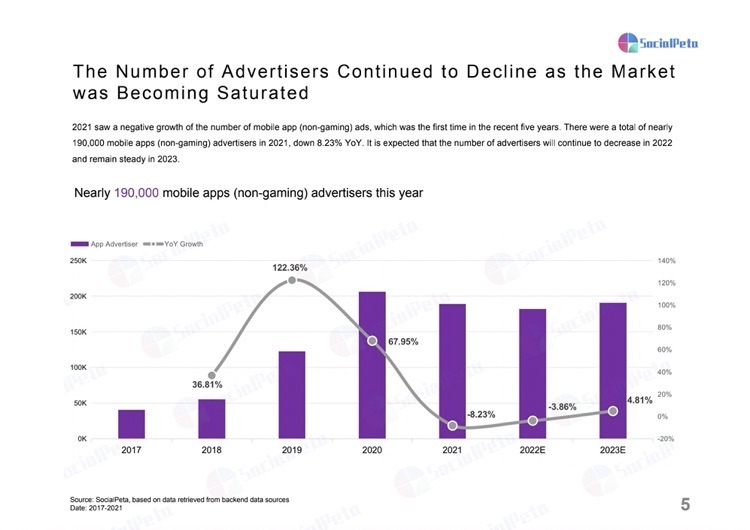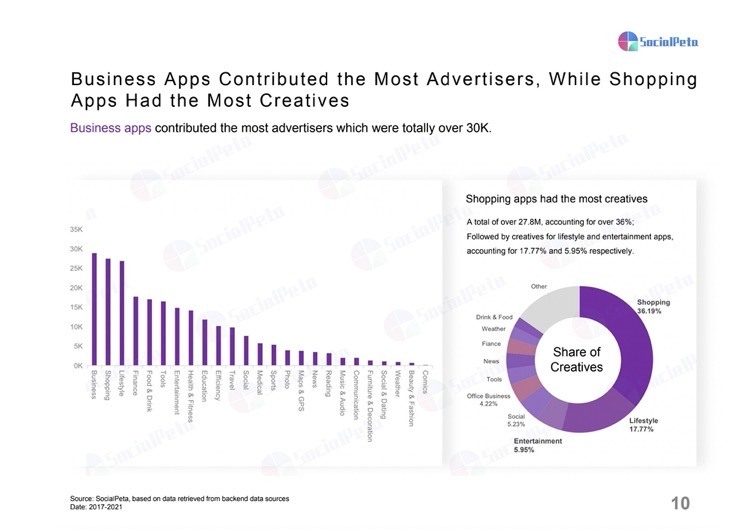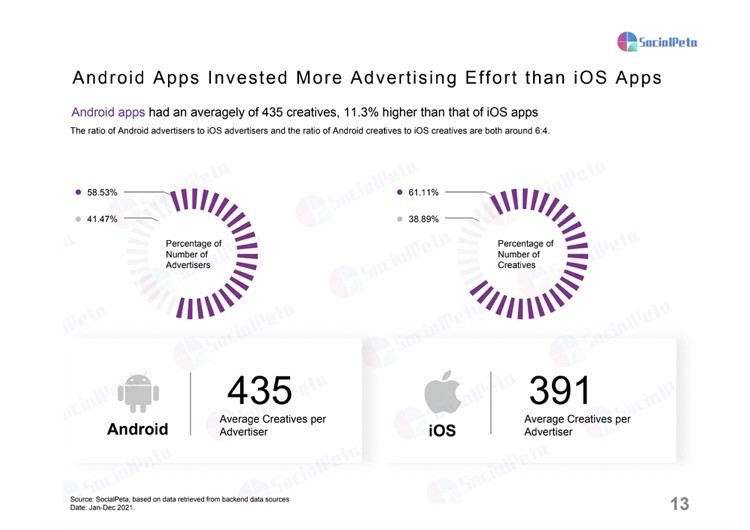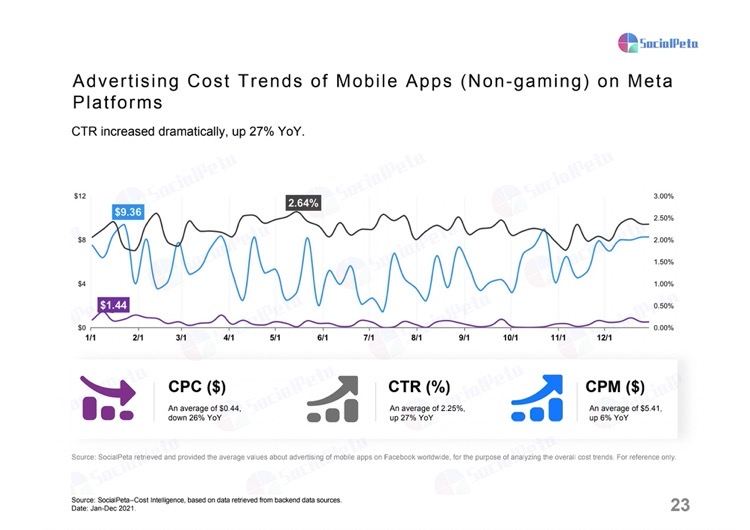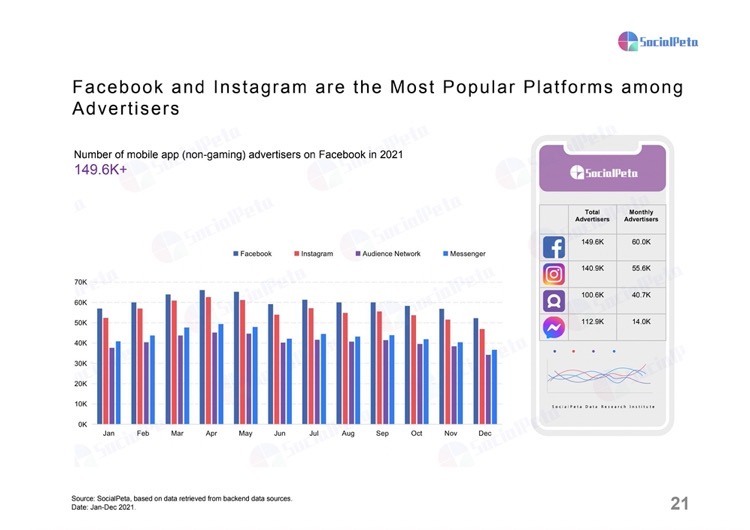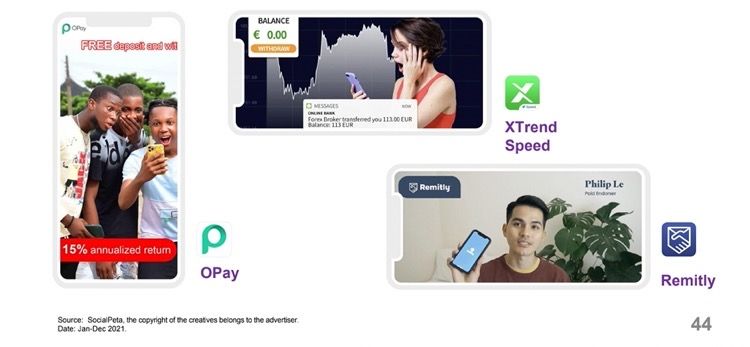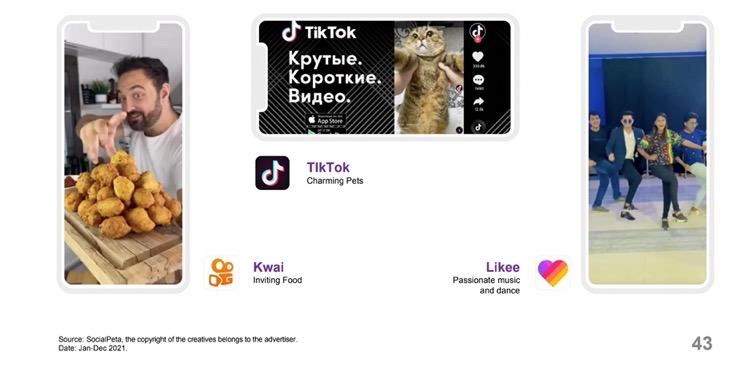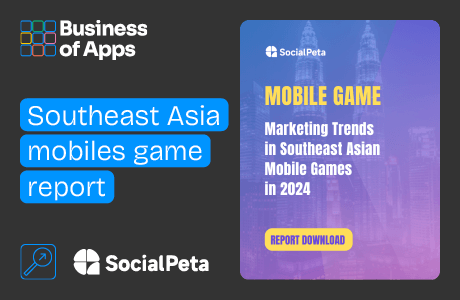With more and more mobile apps being developed, the market is becoming increasingly saturated. As a result, mobile app companies need to venture into trending marketing strategies, or their competitors will overthrow them. The mobile app market dominated the marketing industry in 2021, and these numbers are predicted to rise with creative strategies. Apple introduced a policy in 2021 that allowed users to decide whether they wanted to let an app track their activity on other apps, which also forced marketers to change their marketing methods.
SocialPeta, an ad intelligence platform, released its annual white paper on global mobile apps (non-gaming) marketing with over 70 countries and regions covered. The platform allows mobile app companies to dive into the yearly competitive analysis of the mobile apps industry and lead the market.
Want to learn more about what took the mobile app market by storm in 2021 and the strategies that are predicted to guarantee skyrocketing growth this year? We’ve combined these statistics from SocialPeta in one place.
2021 Mobile App Advertising market review
Ad market statistics
In 2021, there were 190,000 mobile advertisers, an 8.23% decrease from the previous year that had more than 200,000 advertisers. The reason attributed to this decrease was primarily the saturation of the mobile app market, resulting in its first negative value in the past five years. The numbers are further predicted to decrease by 3.86% in 2022 and finally stabilize in 2023 with a growth of 4.82%.
From the 190,000, the highest number of advertisers upheld by business apps. A total of 30,000 advertisers were of business apps. While business apps reigned over advertisers, shopping apps were in control of the creative market, with the most creatives in 2021. Shopping apps had such precedence in the share of creatives accounting for 36.19%, which was second to entertainment contributing only 5.95%.
Meanwhile, between Android apps and iOS apps, Android was on top with an average of 435 creatives, a significant 11.3% higher percentage than iOS apps. Android apps had more advertisers than iOS apps as well.
Ad cost statistics
The average was up by 2.25% in 2021, with a 27% increase from 2020 for mobile marketing of non-gaming apps. Advertising costs concerning CPM increased by 6% compared to 2020, with an average value of $5.41. However, CPC was down by 26% YOY, an average of $0.44.
The US had the highest advertising cost for non-gaming mobile apps on Meta platforms than any country or region. The average CPM was $14.14, CPC $2, and CTR 2.97% in the US.
Ad platforms statistics
The modern era is about making the most of social media marketing, and global mobile app advertisers realize this. The top-most social media platforms in terms of usage – Facebook and Instagram were the most popular apps utilized by advertisers. Both these platforms saw a significant number of non-gaming advertisers, with 149.6K advertisements put up on Facebook alone in 2021.
Want to find out more on in-depth statistic analysis of the mobile marketing industry? SocialPeta’s 2021 global mobile app marketing whitepaper has all this information and more! All you need to do to access this data is visit the SocialPeta website and download the free pdf.
Marketing predictions for mobile apps (non-gaming) market
The latest strategies might not be up your alley as a mobile app advertiser. But, to make a name in the industry, mobile app advertisers need to keep up with the rapidly advancing market. Gear up to lead the race in mobile app marketing of 2022. Here are the strategies that revolutionized mobile app advertising in 2021 and will continue to do so in the upcoming year:
•Real-life stories to relate with users for finance apps
The breakout and widespread of the covid-19 pandemic have greatly affected the economic globalization. More and more users are transferring from the traditional offline financial business to mobile apps. According to SocialPeta’s data on ad creatives for finance apps worldwide, the advertisers prefer their ads to show how real people are surprised by great income from investment, or to show professionals’ analysis.
•Transformation of E-Commerce apps through Live-Action streaming
E-commerce live streaming has been very popular in China, and it will soar in western countries in 2022. TikTok will be leading the way into new territories. Amazon, Facebook, Pinterest, and YouTube are also expanding their e-commerce on mobile. Moreover, mobile e-commerce apps that added this feature paved the way for improving brand appeal and differentiation from their competitors. Most mobile apps are continuously striving to reach younger audiences. Undoubtedly, the most beneficial aspect of live-action performance is the appeal for that age group.
•Popularity of user-generated content in short video apps
Short video apps harness the power of UGC through the voice of people and UGC has become the inspiration for creatives of short video apps. Short videos are especially attractive when people’s time is fragmented due to the high pace of modern life in the information-based society, and there is the algorithm of big data recommendation.
User-generated, short-form content has found a place in the short video apps market like TikTok. Users would make videos of themselves and upload the videos while absorbing other interesting videos, and the high-quality ones would help the platforms attract more new users.
•Emotional connection boosts reading creatives
In the modern world of short-form videos, appealing to the audience with reading creatives is becoming tough. To bring the creative to life, advertisers are now making use of emotional connections through story-based ads. Currently Most popular reading apps focus on female readers; therefore, their ad creatives are mostly about emotions and ethics. The most frequent elements in the creatives are getting pregnant, cheating, handsome men and beautiful women, emotional entanglement, and so on.
•Influencer marketing to gain attention
Once again, like user-generated content, the audience is more likely to resonate with people they follow. Furthermore, this enables users to make decisions in favor of the mobile app more than bombarding them with regular ads. Influencer marketing can shape consumer attitudes towards a brand or advertisement. According to studies, it doesn’t always guarantee an immediate stride towards success, but it’s more effective than a brand advertisement or celebrity endorsement.
Final verdict
Leading the race is difficult in a market with millions of competitors in the same niche. The competition is increasing every single day and advertisers need to think out of the box to thrive in the industry. Mobile app companies need to become a jack of all trades to prevail in the market – from premium app development to futuristic marketing. Without these up your sleeve, it’s a quick descent to the bottom for an app that could otherwise become a pioneer of the industry with the right tricks.
Luckily, the internet is overflowing with information that’ll provide you with the knowledge and skills of mobile app marketing. Progress miles ahead than other mobile apps with these strategies.
Learn more about mobile app marketing, the previous statistics, and future predictions by downloading the SocialPeta 2021 Global Mobile App Marketing White Paper. With this, you’ll have all the data you need and more at your disposal.



